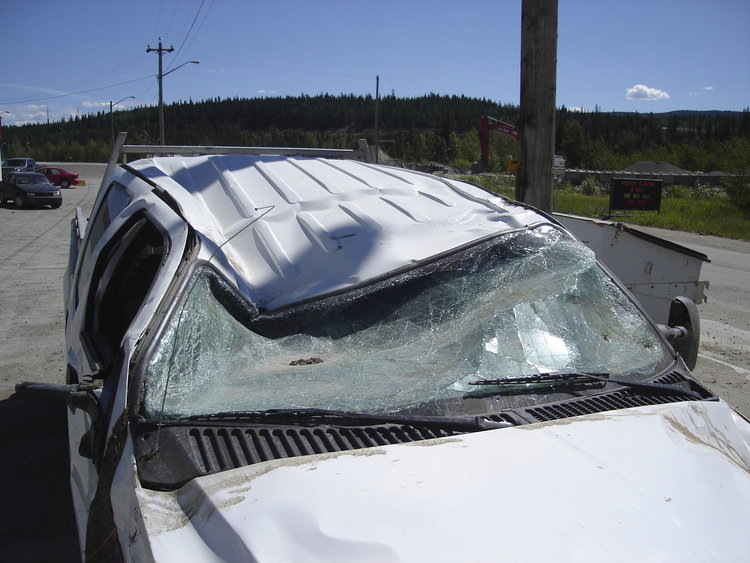
On July 1, 2016, our law firm’s client was driving a 2004 Mercury Mountaineer in Benton County, Missouri. The vehicle traveled through an intersection and off the roadway, overturning once before coming to rest on its wheels. During the rollover, the roof over the driver’s occupant compartment area crushed inward and struck our client, causing a severe spinal cord injury and rendering her a quadriplegic.
On average, about 7,500 motorists die annually in rollover crashes. These types of crashes are particularly dangerous because auto manufacturers have failed to build vehicle roofs strong enough to hold up in rollover crashes. And, the federal standards that govern roof strength fail to provide the threshold necessary to protect passenger occupants from severe injury in rollover crashes.
Lack of Federal Standards & Adequate Testing
Despite recent efforts, the federal government still lacks a performance standard that provides an adequate level of occupant protection for rollover accidents. Since the 1970s, the government’s “roof crush” rule has been woefully inadequate, in part because it’s based on quasi-static testing of vehicle roofs.
In 2009, the roof-crush standard was updated to double the roof strength requirement, but the required strength level remains less than what the Insurance Institute for Highway Safety requires to obtain a “Good” or even “Acceptable” rating. Although the new standard requires testing on both sides of the roof, the quasi-static nature of the test remains the same. As a result, the current federal standard fails to capture the forces and performance of vehicle roofs in real-world rollover accidents, resulting in roofs that are insufficiently built to perform in a real rollover.
Signs of a Rollover Defect
If you have a case involving a vehicle rollover, look for these signs of a defective vehicle roof:
· Roof collapse
· Separation of roof components
· Spinal cord injury or death
Although vehicle rollovers account for only 2 percent of all auto crashes, rollovers produce 35 percent of all deaths in vehicle crashes. Vehicle occupants in rollover accidents are also at heightened risk for spinal cord injuries resulting in paralysis.
Though the safety of newer vehicles has improved under the new standard, serious injuries and fatalities continue to occur. And, older vehicles, unfortunately, still pose a substantial safety threat to motorists.
Contact Langdon & Emison
Clients and referring attorneys rely on Langdon & Emison to evaluate their vehicle rollover cases for potential out defects because of our experience and the results we have obtained in auto defect litigation nationwide. For more information about vehicle rollover cases, contact Langdon & Emison at 866-931-2115 or langdonemison.com.


